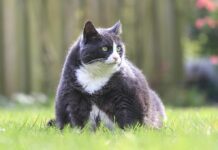Picky Eaters
We hear it all the time. Worried, exacerbated, frustrated pet owners wondering what next to try with their pets. Apprehensive that yet another new food or another attempt to top their food with something will be met once again with disapproval by their dog or cat. Not happening to you? Consider yourself in the minority.
But why is your pet being picky? One reason may surprise you: Your pet may not be picky at all. They might be instinctual.
Imagine eating your favorite non-sugar breakfast cereal. It tastes good, it has great mouth feel. The cereal is “complete and balanced,” and it successfully fills you up. Can you imagine eating this every day for every meal, forever? Of course not! Soon you would be craving more variety and food containing less processed ingredients.
Now consider the cat or dog eating a dry food diet. Like cereal, there are good ones and not so good ones. But the end result for many dogs and cats is boredom and craving of something fresh. Feeding your pet a dry food is like eating cereal every day. Sure, dry (kibble) is also complete and balanced but at best, a bag of high-quality kibble is still 30% carbohydrates in the form of grains or legumes.
Are carbs bad? The simple answer is, no, but it’s more complicated than that. Carbohydrates are essential for metabolism and cellular function; however, the quality and quantity of carbohydrates is important. Many grains and legumes are treated with pesticides, some contain gluten which can be hard for many to digest. Cats, being obligate carnivores, requires less carbohydrates for survival than dogs. And some foods are using high protein carbohydrates as a substitute for animal protein.
According to the book “The Forever Dog” by Rodney Habib and Dr. Karen Shaw Becker, 87 percent of pet owners are adding other things to their pets bowls. I suspect many of you do this because you do want to make the food more fresh and nutritious and avoid protests at your pets’ bowls and have found a variety of ways to do this.
How and what, can you add to your dog’s dish?
- Lightly cooked or raw vegetables such as broccoli, kale, sprouts, parsnips, fennel, celery, spinach, cucumbers, brussel sprouts, mushrooms, carrots, parsley, chard, cilantro (no onions as these are toxic)
- Fresh fruits such as blueberries, strawberries, raspberries, blackberries, apples, pears, cherries, pomegranates, and bananas (no grapes or raisins, as these are toxic).
How and what to add to your dog or cat’s dish?
- Lightly cooked, freeze dried or raw organ meats such as kidney, liver and hearts of chickens, turkeys, cows, etc. (this is rich, so think small amounts).
- Raw goat or cow milk (also a rich topper, we recommend 1 tablespoon per 5 lbs).
- Freeze dried or air-dried foods make excellent additions to a dry food. This can easily replace about 10% of the kibble. This can be purchased at most pet supply stores, and we are now selling many selections by the ounce in our bulk section.
When to see your vet
Not all picky eating behavior is harmless. If your pet suddenly becomes picky and doesn’t seem like themselves, it’s time to see the vet.
Feel free to email me with any questions or are seeking more information, or ideas, on how to add more variety to your pet’s diet. I can also make veterinary nutrition recommendations and reading suggestions if you are interested!

























